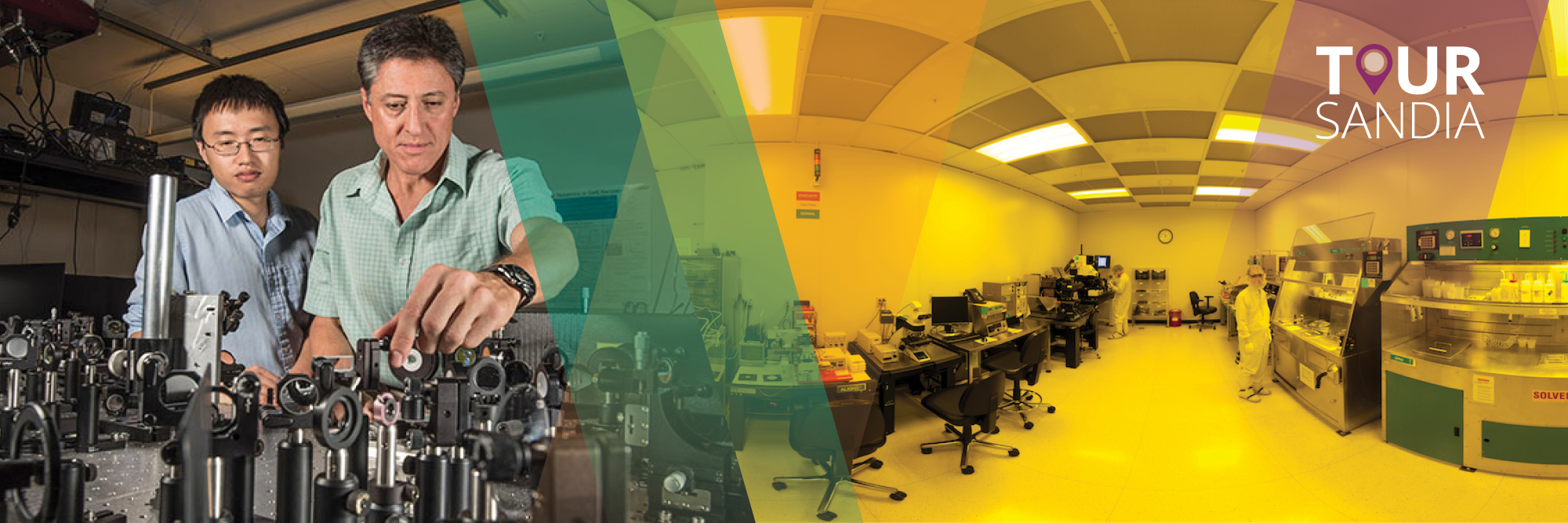Overview
At the Center for Integrated Nanotechnologies, staff and investigators from around the globe conduct some of the latest science, technology, and engineering research in nanotechnology.
The core CINT building in Albuquerque is 96,000 square feet and features low vibration for sensitive characterization, chemical and biological synthesis labs, a clean room for device integration, interaction areas and conference rooms, visitor office space, and high-speed communications.
The 36,000-foot CINT Gateway building in Los Alamos National Laboratory brings together materials science and bioscience capabilities.
Interesting Facts
Cancer Research:
- Did you know nanotechnology has applications for cancer research? After his wife survived breast cancer, New Mexico physicist Ed Flynn refocused his research on using magnetic nanoparticles as a more sensitive detection method for cancer. A collaboration between Flynn’s private company Senior Scientific and CINT scientists lead to groundbreaking technology that can detect breast, prostate, and other cancers with significantly greater sensitivity than is currently possible.
- The way scientists like Ed Flynn conduct research on cancer detection is by focusing on specialized magnetic nonparticles which are about 10,000 smaller than a human hair. These nanoparticales are attached to cancer-specific antibodies and injected into a patient’s body where they bind to receptors on the cancer cells. The cancer cells can then be detected with magnetic sensors called SQUIDS.
Anthrax Detector:
- In 2015, Sandia scientists won the national Federal Laboratory consortium’s (FLC) Award for Excellence in Technology Transfer for a credit-card-sized device called BaDx that can detect bacteria that cause anthrax.
- The device was tested in the Department of Internal Medicine at the University of New Mexico, and at Sandia, where nondisease-causing strains of the bacteria were used.
- BaDx (Bacillus anthracis Diagnostics) works in places with no power, refrigerated storage, or lab equipment. It requires minimal or no training and makes anthrax testing safer, easier, faster, and cheaper.
- The detector was licensed by a New Mexico company called Aquila, a small business that specializes in the design and manufacture of technologies and services for nuclear security and international safeguards.
- Video: https://www.youtube.com/watch?v=aZbJK2jkes0
